MIND-CONTROLLED DRONES, The Power Of Thought.
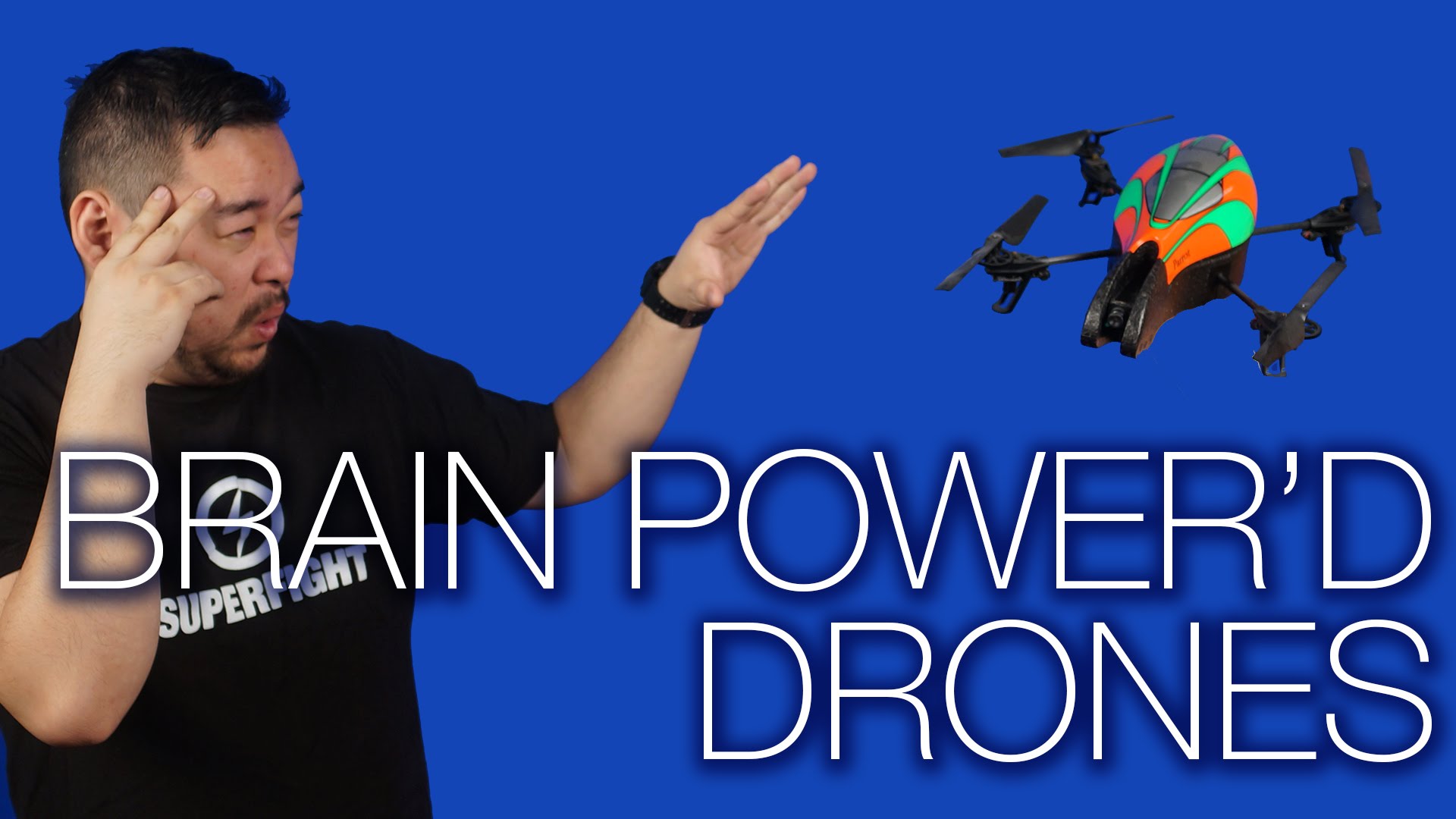
THE first drones were military. The use of pilotless aircraft as weapons dates back to the battle for Venice in the mid 19th Century. Austrian forces launched balloons equipped with various munitions against the city. But the origin of drones is attributed to the uncrewed, remote-operated aircraft for use as targets for military training in 1935. With such extreme advancements in technology since the initial launch of the 'Queen Bee' the first of the unmanned drones. Did those brilliant minds ever anticipate that within a century we would be operating them with our mind.
![drones3].jpg](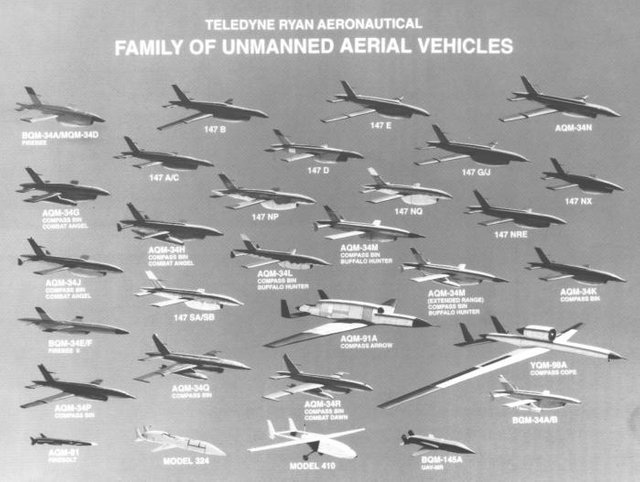 )
)
As drones gradually become a bigger part of our lives, their abilities grow exponentially. Today, we stand at the cusp of human-drone integration, with enormous scope for medical, scientific, and commercial applications. According to the Abstract of Artemiadis’ project at Arizona State University, which has been supported by the Defense Advanced Research Projects Agency (commonly known as DARPA), the end goal is to achieve brain connections that allow for an individual human pilot to “perceive multi-agent systems information" in order to then extract “control commands” for those systems. Artemiadis is trying to establish a system in which anyone can operate a drone or multiple drones, each vehicle receiving individual commands.
Military and consumer drones are being accelerated by progress in two areas of research: autonomy and swarming. If you automate away the need for a hands on operator, drones suddenly become much more useful. Military ones that do not require a human operator can be radio silent and stealthier. Consumer ones can film from above. Commercial ones can fly a pre-planned path as they gather data. Improved flight-control algorithms, more on-board processing power and progress in machine vision will allow UAVs (Unmanned Aerial Vehicle) to handle more decisions themselves, rather than relying on human operation. The next generation of drones will not need pilots at all–just orders.
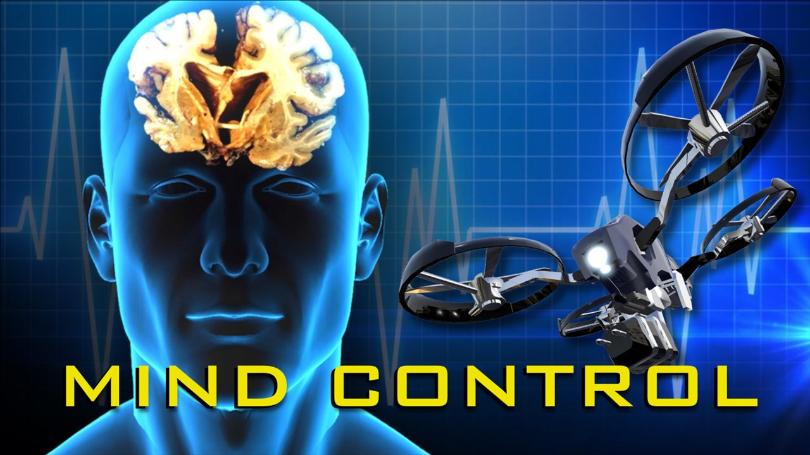
Breakthroughs in symbiosis between humans and robotics in the past decade, such as allowing command of mechanized limbs with thought. This biotech has already been moving toward the complete understanding necessary, but we're seeing these advances in action. Many of those attributed to Arizona State University’s Human-Oriented Robotics and Control Lab.“We first train the human subjects to be able to imagine behaviors,” Artemiadis says, referring to commands. “Then we write an algorithm to mimic those behaviors the originate from different parts of the brain,” Artemiadis explains. Commands are transmitted to the drone via an electroencephalogram worn on a pilot’s head.
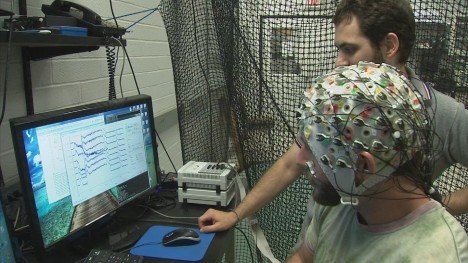
Using a skullcap fitted with 128 electrodes wired to a computer, researchers are able to control multiple drones using human thought and vision to guide the quadcopters wirelessly. The device records electrical brain activity and measures the movement of the drones based on parts of the brain that light up. This signal is monitored and sent to another computer that transmits a signal to the drones, making them move.

“The swarming paradigm, deriving inspiration from the behavior of natural swarms such as bird flocks and fish schools, offers myriad advantages to a team of drones,” Artemiadis said in an interview. “We can extract information related to the desired collective behaviors, like flying to a specific formation, that is not possible with manual control interfaces.”
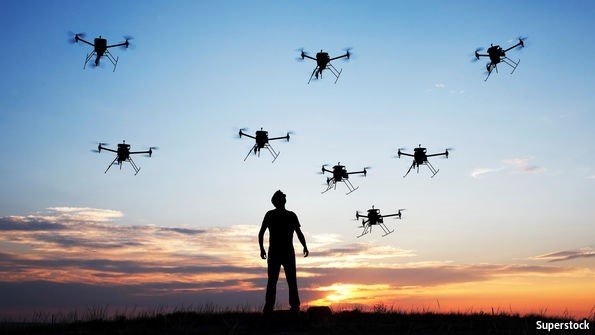
Researchers have determined what parts of the brain are able to move the swarm and reduce cohesion of the group—that is, spread it out—but have not yet worked through issued commands such as swarming or defending an area. This is because of the singular focus needed to move each member of the group. Distractions—such as thoughts of what to have for lunch—and due to people’s brain signals being different, the system needs to be recalibrated often. Eventually, Artemiadis and his team hope to move to a larger facility and expand the project by having multiple people controlling multiple robots.
Artemiadis, has tested a swarm of three drones, but he says the technology could work on a vastly larger scale. “As long as there is a centralized controller that can communicate the commands to the drones,” he said, “the brain-swarm control algorithm is scalable to hundreds or thousands of them.”
WATCH: Force pilots will soon be able to control fleets of drones using their minds
Thanks For Reading

Source
http://bearsbutt.com/2014/10/11/drones-the-next-big-deal/
https://www.businessinsider.com.au/drones-you-can-control-with-your-mind-2014-10http://www.thedrive.com/aerial/15322/mind-controlled-drone-fleets-are-coming-researcher-says
https://www.engineering.com/DesignerEdge/DesignerEdgeArticles/ArticleID/12840/How-to-Control-a-Swarm-of-Drones-with-Your-Mind.aspx
Hi! I am a robot. I just upvoted you! I found similar content that readers might be interested in:
https://www.engineering.com/DesignerEdge/DesignerEdgeArticles/ArticleID/12840/How-to-Control-a-Swarm-of-Drones-with-Your-Mind.aspx
@danjo1984 you were flagged by a worthless gang of trolls, so, I gave you an upvote to counteract it! Enjoy!!
Congratulations @danjo1984! You received a personal award!
Click here to view your Board
Congratulations @danjo1984! You received a personal award!
You can view your badges on your Steem Board and compare to others on the Steem Ranking
Vote for @Steemitboard as a witness to get one more award and increased upvotes!